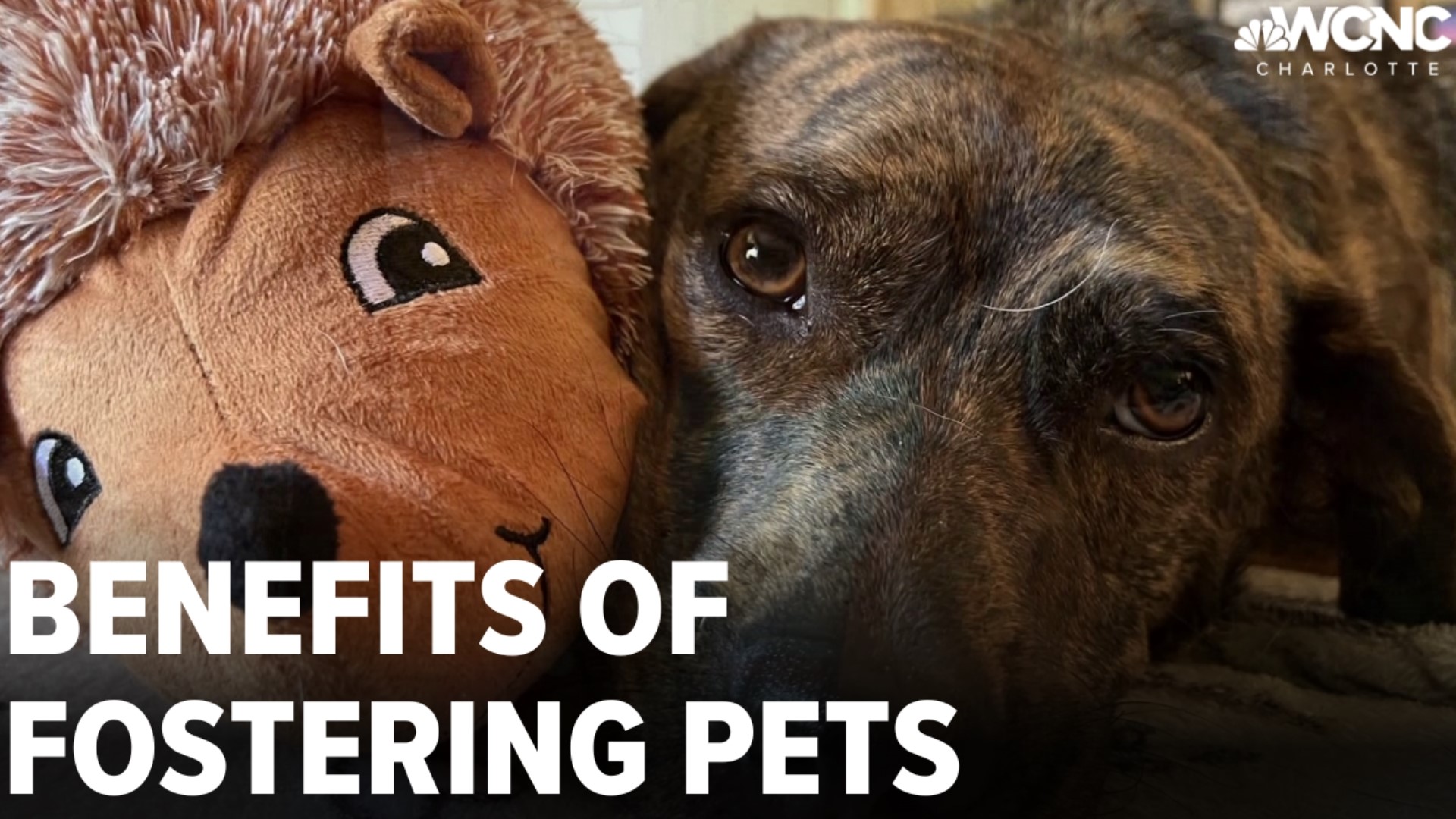CHARLOTTE, N.C. — It's been one year since Moose the dog found his way into Natalie Peterman's heart and home.
"He's just come out of his shell," Peterman said. "And the longer that we have him, and the more that I think that he has learned to trust that his situation is kind of set now, he just seems to become a better and better dog."
But there was reasonably a time when the Charlotte-Mecklenburg Police Department Animal Care and Control pup was not finding his way out of the shelter.
Jennifer Younts, a shelter volunteer and foster, remembers Moose's mental state back then. At the time, he was called Romeo and was staying in the ACC kennels. Younts used to walk him during her volunteer time.
"He was the sweetest thing," Younts said. "But if dogs were walking by his kennel -- or even people -- I mean, he was just like going at the gate. So, he looked like a vicious dog. But it was just that stress."


Kennel stress is not an unusual condition to see in animal shelters. Shelter staff characterize it as mental and emotional turmoil from confinement in a strange and stressful environment. In dogs, it can present as behavioral and even physical problems, which usually escalate the longer the animal remains in the shelter.
"You start to see them jumping up and barking at the front of the kennels when people walk by," Melissa Knicely, CMPD Animal Care and Control Communications Director, said. "When you get them out of the kennels, they're going to be really pulling hard, and they're possibly going to be biting the leash. Some of them get mouthy."
Those behaviors can, in turn, make it harder to adopt the dog out and often put them atop the list of heartbreaking decisions needing to be made when space runs out.
Knicely said combatting kennel stress is one of the main reasons shelters have invested more in animal enrichment programs over the years, with activities like walk sessions and playtime, daycations (day trips away from the kennels with members of the public), and specialized treats meant to stimulate animals' brains.
Fostering is also an important part of combatting kennel stress -- giving anxious animals a break from chaotic kennels to decompress. It also allows the shelter to gather more detailed information about an animal's personality and behavior in a real home setting.
Younts remembers Moose's transformation after coming to her home as a foster.
"When I brought him home and when he met our dogs like something just clicked in him," Younts said. "He was like, 'That's a dog. I'm a dog. I'm going to do with these dogs are doing.' And he was... a perfect angel."


Peterman said when Younts first introduced Moose to her as a possible pup to adopt, she had no idea he had been acting out in the kennels. By the time she met him, the transformation to the dog she now knows and loves was already underway.
"Oh, my gosh -- if Jennifer hadn't taken him, he probably would never have shown well in the kennel," Peterman said. "I might have never selected him because of that, and that would have been horrible."


Romeo's picture is now on the wall of foster success stories in the Younts home. She is hoping to add her current foster Felix to that wall next.


Felix is a 2-year-old pit bull terrier with the CMPD Animal Care and Control system. Younts said he is doing well with house training and crate training and does well meeting other dogs.
"He's really smart," Younts said. "He's a quick learner. He sits. He shakes. He's a really good boy."
While he has remnants of puppy energy, Felix has done very well being polite in public settings, Younts said. He's gone on hikes, to pet-friendly shops and breweries in the area.

